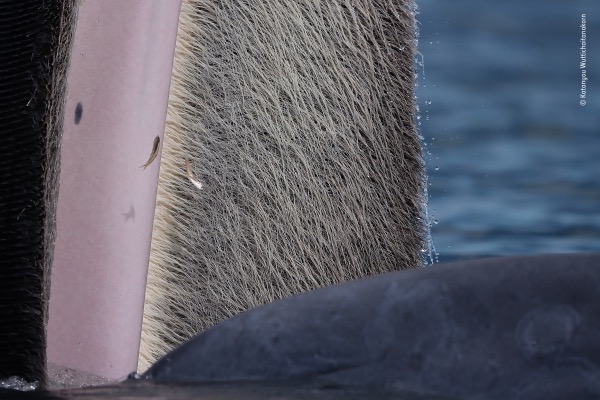
An ornate turreted building in South Kensington, construction of the Imperial Institute began in 1887 – the year of Queen Victoria’s Golden Jubilee.
Designed by Thomas Edward Collcutt and paid for almost entirely by public subscription, the huge 213 metre long building featured three “Renaissance-style” towers with copper covered domes. Foremost among them was the 87 metre high Queen’s Tower (initially known as the Collcutt Tower after the architect).
Officially opened by Queen Victoria in 1893 (although the building was apparently never completed), the building – which was built to mark the Queen’s Golden Jubilee – was intended as an exhibition space to showcase the Empire’s industrial and commercial resources and also as a location for research and meetings.
 The idea for a permanent exhibition space for colonial “produce” had apparently been enthusiastically backed by the Prince of Wales (and the Queen herself) following a series of exhibitions showcasing the wares of India and the colonies in preceding years.
The idea for a permanent exhibition space for colonial “produce” had apparently been enthusiastically backed by the Prince of Wales (and the Queen herself) following a series of exhibitions showcasing the wares of India and the colonies in preceding years.
But the enthusiasm for the institute, said to have cost more than £350,000, quickly waned (perhaps because of a vagueness over its purpose) and despite efforts to encourage people to use it through introducing “attractions” like a billiards room, the financial position of the institute became somewhat straitened.
Help came from the University of London which took over half of the building just six years later in 1899 and other tenants followed in attempt to keep money for maintenance flowing. Various government departments took on responsibility for the building in the following years.
With its purpose increasingly questioned by the middle of the 20th century, when Imperial College needed to expand, it was decided to demolish the building. Demolition started in 1957 and ran into the mid-1960s. Thanks to public protests led by Poet Laureate Sir John Betjeman, the Queen’s Tower, however, was preserved and is now part of Imperial College.
The tower, which once had a public viewing gallery (now closed) contains 10 bells, known as the Alexandra Peal, which are hung about halfway up the tower. They given by a Mrs Elizabeth A Miller, of Melbourne, Australia, in 1892 as a gift and are named after Queen Victoria, the then Prince and Princess of Wales, and other children and grandchildren of the Queen. They are rung on important college occasions.
Meanwhile, the institute, renamed the Commonwealth Institute, relocated to Kensington High Street. It later went into liquidation. That site now houses the recently unveiled Design Museum.
PICTURE: Top – Imperial Institute during the Edwardian era (public domain); Below – The Queen’s Tower is all that now remains of the institute (licensed under CC BY-SA 3.0















 Dating from 1766, the clock (pictured) sits in a seven foot tall decorated case, believed to have been made by London cabinet-maker Thomas Chippendale. Inside is a barograph – comprised of two tubes of mercury in which a float rises and falls as atmospheric pressure changes and the data is recorded on the clock dial which rotates once a year.
Dating from 1766, the clock (pictured) sits in a seven foot tall decorated case, believed to have been made by London cabinet-maker Thomas Chippendale. Inside is a barograph – comprised of two tubes of mercury in which a float rises and falls as atmospheric pressure changes and the data is recorded on the clock dial which rotates once a year.



 • The largest exhibition ever mounted about the life of 17th century diarist Samuel Pepys opens at the National Maritime Museum in Greenwich tomorrow. Samuel Pepys: Plague, Fire, Revolution features more than 200 paintings and objects brought together from museums, galleries and private collections which explore the life of the famous diarist (depicted here in a bust outside the Guildhall Art Gallery) against the backdrop of the tumultuous events of Stuart London, from the execution London of King Charles I in 1649 through the Great Fire of London and the Glorious Revolution on 1688. Objects on show include the famous painting, Portrait of Charles II in Coronation Robes, objects connected to Pepys’ mistresses including one of his love letters to Louise de Kéroualle (aka ‘Fubbs’ or ‘chubby’) and other personal items such as a lute owned by Pepys. The exhibition is accompanied by a series of events including Pepys Show Late: Party like it’s 1669 (26th November) and a series of walks and talks. Admission charge applies. The exhibition runs until 28th March. For more, see
• The largest exhibition ever mounted about the life of 17th century diarist Samuel Pepys opens at the National Maritime Museum in Greenwich tomorrow. Samuel Pepys: Plague, Fire, Revolution features more than 200 paintings and objects brought together from museums, galleries and private collections which explore the life of the famous diarist (depicted here in a bust outside the Guildhall Art Gallery) against the backdrop of the tumultuous events of Stuart London, from the execution London of King Charles I in 1649 through the Great Fire of London and the Glorious Revolution on 1688. Objects on show include the famous painting, Portrait of Charles II in Coronation Robes, objects connected to Pepys’ mistresses including one of his love letters to Louise de Kéroualle (aka ‘Fubbs’ or ‘chubby’) and other personal items such as a lute owned by Pepys. The exhibition is accompanied by a series of events including Pepys Show Late: Party like it’s 1669 (26th November) and a series of walks and talks. Admission charge applies. The exhibition runs until 28th March. For more, see 
